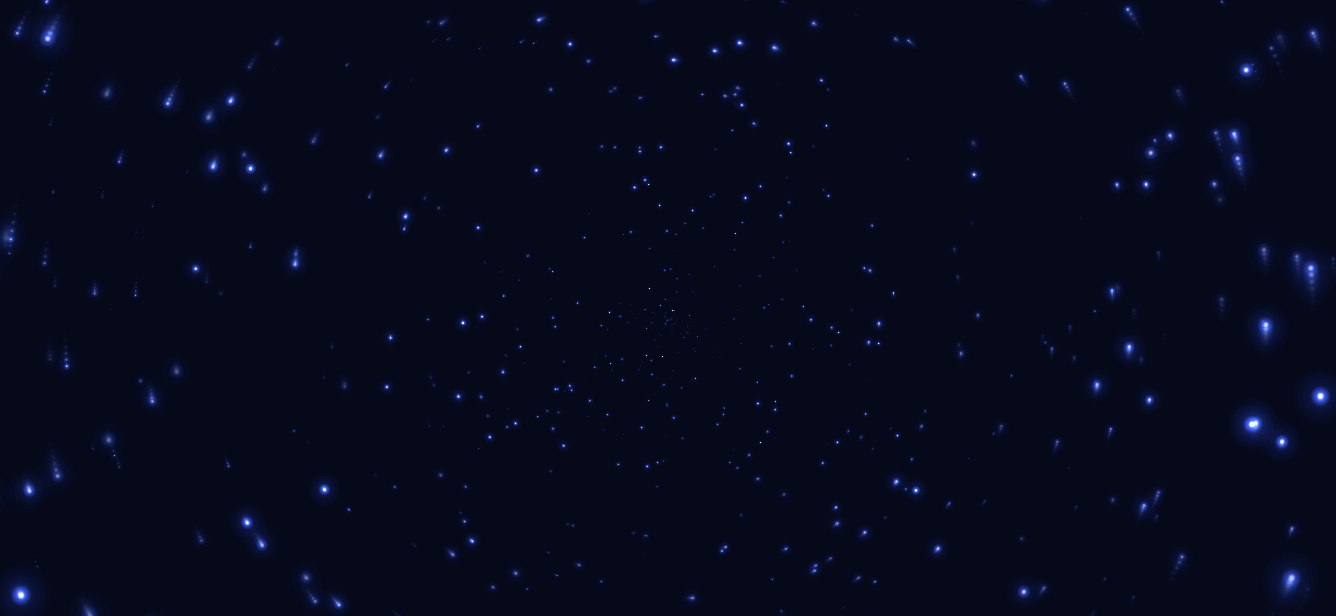怎么在JavaScript中使用canvas实现一个旋转星空效果?很多新手对此不是很清楚,为了帮助大家解决这个难题,下面小编将为大家详细讲解,有这方面需求的人可以来学习下,希望你能有所收获。
首先引入两个javascript脚本,一个是jquery插件,另一个是封装好的cosmos_canvas.js
<script src="js/jquery-1.11.0.js" type="text/javascript" charset="utf-8"></script>
<script src="canvas/cosmos_canvas.js" type="text/javascript" charset="utf-8"></script>HTML,当然如果浏览器不支持canvas的话,运行程序没效果,并显示“该浏览器不支持canvas”
<canvas id="starts">该浏览器不支持canvas</canvas>cosmos_canvas.js脚本
function canvas(id,starscolor,starsamount,starsradius,movrange,speed,trailing){
//宇宙特效
"use strict";
var canvas = document.getElementById(id),
ctx = canvas.getContext('2d'),
w = canvas.width = window.innerWidth,
h = canvas.height = window.innerHeight,
hue = starscolor,//230
stars = [],
count = 0,
maxStars = starsamount;//星星数量
var canvas2 = document.createElement('canvas'),
ctx2 = canvas2.getContext('2d');
canvas2.width = 100;
canvas2.height = 100;
var half = canvas2.width / 2,
gradient2 = ctx2.createRadialGradient(half, half, 0, half, half, half);
gradient2.addColorStop(0.025, '#CCC');
gradient2.addColorStop(0.1, 'hsl(' + hue + ', 61%, 33%)');
gradient2.addColorStop(0.25, 'hsl(' + hue + ', 64%, 6%)');
gradient2.addColorStop(1, 'transparent');
ctx2.fillStyle = gradient2;
ctx2.beginPath();
ctx2.arc(half, half, half, 0, Math.PI * 2);
ctx2.fill();
// End cache
function random(min, max) {
if (arguments.length < 2) {
max = min;
min = 0;
}
if (min > max) {
var hold = max;
max = min;
min = hold;
}
return Math.floor(Math.random() * (max - min + 1)) + min;
}
function maxOrbit(x, y) {
var max = Math.max(x, y),
diameter = Math.round(Math.sqrt(max * max + max * max));
return diameter / movrange;
//星星移动范围,值越大范围越小,
}
var Star = function() {
this.orbitRadius = random(maxOrbit(w, h));
this.radius = random(starsradius, this.orbitRadius) / 8;
//星星半径大小
this.orbitX = w / 2;
this.orbitY = h / 2;
this.timePassed = random(0, maxStars);
this.speed = random(this.orbitRadius) / speed;
//星星移动速度
this.alpha = random(2, 10) / 10;
count++;
stars[count] = this;
}
Star.prototype.draw = function() {
var x = Math.sin(this.timePassed) * this.orbitRadius + this.orbitX,
y = Math.cos(this.timePassed) * this.orbitRadius + this.orbitY,
twinkle = random(10);
if (twinkle === 1 && this.alpha > 0) {
this.alpha -= 0.05;
} else if (twinkle === 2 && this.alpha < 1) {
this.alpha += 0.05;
}
ctx.globalAlpha = this.alpha;
ctx.drawImage(canvas2, x - this.radius / 2, y - this.radius / 2, this.radius, this.radius);
this.timePassed += this.speed;
}
for (var i = 0; i < maxStars; i++) {
new Star();
}
function animation() {
ctx.globalCompositeOperation = 'source-over';
ctx.globalAlpha = trailing; //尾巴
ctx.fillStyle = 'hsla(' + hue + ', 64%, 6%, 2)';
ctx.fillRect(0, 0, w, h)
ctx.globalCompositeOperation = 'lighter';
for (var i = 1, l = stars.length; i < l; i++) {
stars[i].draw();
};
window.requestAnimationFrame(animation);
}
animation();
}调用方法:这里没写任何样式所以默认情况下是全屏效果
$(function(){
//canvas的id名,星星颜色(hsla的hue色调),星星数量,星星半径比,星星移动范围(值越大范围越小),星星移动速度(值越大速度越慢),星星拖尾效果(0~1值越小拖尾越明显)
canvas("starts",230,1000,60,2,50000,0.5);
});效果:

然后我再加3个canvas,改些参数做效果对比吧
HTML
<canvas id="starts">该浏览器不支持canvas</canvas>
<canvas id="starts1">该浏览器不支持canvas</canvas>
<canvas id="starts2">该浏览器不支持canvas</canvas>
<canvas id="starts3">该浏览器不支持canvas</canvas>javascript
$(function(){
//canvas的id名,星星颜色(hsla的hue色调),星星数量,星星半径比,星星移动范围(值越大范围越小),星星移动速度(值越大速度越慢),星星拖尾效果(0~1值越小拖尾越明显)
canvas("starts",230,1000,60,2,50000,0.5);
canvas("starts1",160,800,70,2.5,55000,0.4);
canvas("starts2",80,600,80,3,60000,0.3);
canvas("starts3",0,400,90,3.5,65000,0.2);
$("canvas").width($(window).width()/2);
$("canvas").height($(window).height()/2);
$("canvas").css("float","left");
});看完上述内容是否对您有帮助呢?如果还想对相关知识有进一步的了解或阅读更多相关文章,请关注亿速云行业资讯频道,感谢您对亿速云的支持。
亿速云「云服务器」,即开即用、新一代英特尔至强铂金CPU、三副本存储NVMe SSD云盘,价格低至29元/月。点击查看>>
免责声明:本站发布的内容(图片、视频和文字)以原创、转载和分享为主,文章观点不代表本网站立场,如果涉及侵权请联系站长邮箱:is@yisu.com进行举报,并提供相关证据,一经查实,将立刻删除涉嫌侵权内容。